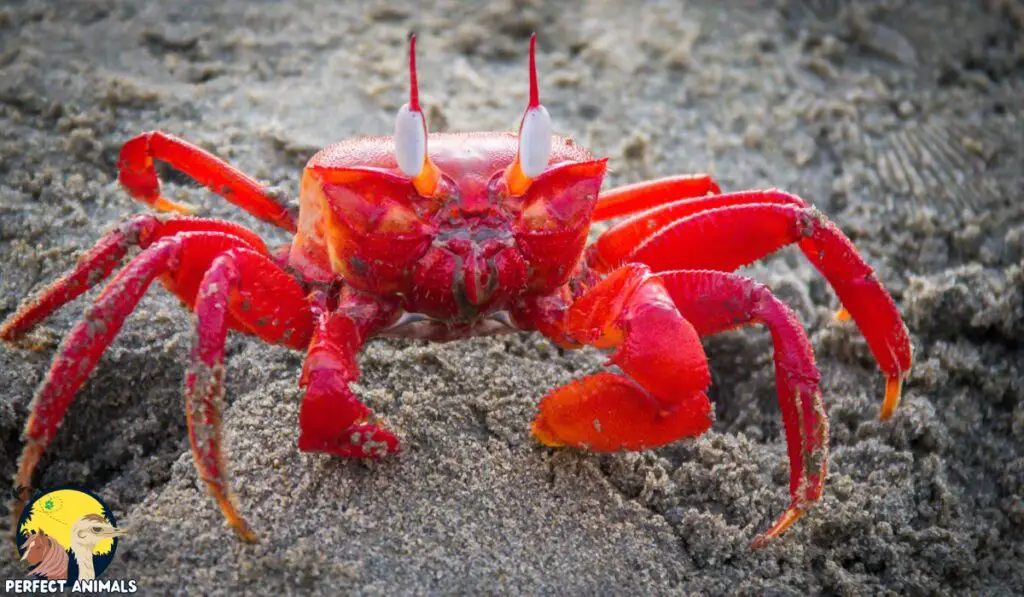Yes, crabs do sleep. They typically rest in burrows or under rocks during low tide.
Crabs, like many other animals, have a natural sleep cycle. They usually find a sheltered spot to rest during low tide, where they can protect themselves from predators and conserve energy.
While they may not have eyelids to close, their bodies still go through periods of rest and activity, similar to humans.
Understanding the sleep habits of crabs is important for their conservation and welfare, as disturbances during their resting periods can have negative effects on their health and survival.
By respecting their natural behaviors and habitats, we can help ensure the well-being of these fascinating creatures.
Do Crabs Sleep With Their Eyes Open?
rabs sleep with their eyes open because they have no eyelids. This is a common adaptation in crustaceans, as they do not have eyelids like mammals.
Instead, they have a transparent covering over their eyes that protects them from debris and other particles. This covering is called the cornea, and it is made up of a layer of chitin, which is a tough, fibrous material found in the exoskeletons of arthropods.

The cornea of a crab is not only responsible for protecting the eyes but also for filtering out small particles and debris that may enter the eye.
This is particularly important for crabs that live in environments with high levels of sediment, such as sandy beaches or rocky shores.
The cornea acts as a physical barrier, preventing small particles from entering the eye and causing damage to the delicate structures within.
In addition to the cornea, crabs have other adaptations that help protect their eyes. For example, they have a thick layer of chitin on the outer surface of their eyes, which provides additional protection from debris and other particles.
They also have a series of small hairs on the surface of their eyes, which help to trap and remove particles that may settle on the surface of the eye.
Overall, the fact that crabs sleep with their eyes open is a fascinating adaptation that allows them to protect their eyes from damage while they are resting.
This adaptation is just one of the many ways in which crabs have evolved to survive and thrive in their various habitats.
Related Article – Can Crabs Swim?
How Long Do Crabs Sleep?
Crabs sleep for approximately 6-8 hours, similar to humans. However, their sleep patterns are not as consistent as those of mammals, as they are influenced by factors such as temperature, humidity, and predation risk.
Crabs are nocturnal creatures, meaning they are more active at night, and they can be found in various habitats, including the ocean, sandy beaches, and rocky shores.
The length of time that crabs sleep can also vary depending on their species and life stage.
For example, juvenile crabs may sleep for shorter periods of time than adults, as they are more vulnerable to predation and need to be more alert to avoid danger.
Additionally, some crab species may have longer sleep periods during certain times of the year, such as during mating season or when they are in a more sedentary phase of their life cycle.
Do Crabs Sleep During The Day?
Crabs are nocturnal creatures, meaning they are more active at night. They naturally sleep during the day and come out at night to forage for food and avoid dehydration from the hot sun.
This sleep pattern is an adaptation that allows crabs to conserve energy during the day when food may be scarce and to avoid predation from other animals that are more active during the day.
In addition to their nocturnal behavior, crabs have other adaptations that help them survive in their various habitats.
For example, some crabs have the ability to burrow into the sand or other substrates to escape predators or to find food.
Others have specialized claws or other appendages that allow them to capture prey or defend themselves from predators.
Where Do Crabs Sleep?
Crabs can be found in various habitats, including the ocean, sandy beaches, and rocky shores. They are adapted to living in different environments and have different sleep patterns and behaviors depending on their habitat.
In the ocean, crabs may sleep on the ocean floor or in crevices in rocks or coral reefs. They may also burrow into the sand or other substrates to escape predators or to find food.
Crabs in the ocean are more likely to be active during the night when they are less visible to predators and when food may be more abundant.
On sandy beaches, crabs may sleep under sand or other substrates, such as rocks or coral. They may also burrow into the sand to escape predators or to find food.
Crabs on sandy beaches are more likely to be active during the night when the sand is cooler and when food may be more abundant.
On rocky shores, crabs may sleep on the rocks or in crevices in the rocks. They may also burrow into the sand or other substrates to escape predators or to find food.
Crabs on rocky shores are more likely to be active during the night when they are less visible to predators and when food may be more abundant.
Related Article – Discover 12 Crabs in Florida (With Pictures)
Do Crabs Seep Upside Down?
Crabs do not typically sleep upside down. They are adapted to move around on their legs and are more likely to be found in an upright position when they are not actively moving.
However, they may rest in a more relaxed position when they are not actively foraging or avoiding predators.
In addition to their upright posture, crabs have other adaptations that help them move around and survive in their various habitats.
For example, they have specialized claws or other appendages that allow them to capture prey or defend themselves from predators.
They also have a tough exoskeleton that protects them from predators and the environment.
Overall, the fact that crabs do not typically sleep upside down is an important adaptation that allows them to move around and survive in their various habitats.
How To Make a Crab Fall Asleep?
This sounds like a silly question, but if you really want to know, it is not possible to make a crab fall asleep in the same way that you might make a human or mammal fall asleep.
Crabs do not have the same sleep patterns as mammals, and they do not respond to external stimuli in the same way.
However, you can create a suitable environment for a crab by providing appropriate temperature, humidity, and substrate conditions to ensure that the crab is comfortable and can exhibit normal behavior.
For example, you can provide a cool, damp environment with a sandy or rocky substrate that allows the crab to burrow and hide.
You can also provide a variety of food sources to ensure that the crab has access to a balanced diet.
You May Also Like – Do Sea Turtles Drink Water?
What Do Crabs Do When They Wake Up?
When crabs wake up, they are likely to be more active and forage for food. They may also be more susceptible to predation, as they are less likely to be hiding or resting in their burrows or other hiding places.
It is essential to provide a suitable environment for crabs to ensure that they can exhibit normal behavior and avoid predation.
In addition to foraging for food, crabs may also engage in other behaviors when they wake up. For example, they may clean their exoskeleton to remove debris and other particles.
They may also mate or engage in other reproductive behaviors, depending on their species and life stage.
Overall, the fact that crabs are more active and vulnerable when they wake up is an important aspect of their behavior that should be considered when providing suitable environments for them.
By understanding their sleep patterns and behaviors, we can help ensure that crabs are provided with suitable environments to exhibit normal behavior and avoid predation.
Final Thoughts
Crabs are fascinating creatures with unique sleep patterns and behaviors. They sleep with their eyes open, exhibit slow wave activity in their brain, and are nocturnal creatures that naturally sleep during the day.
Crabs can be found in various habitats, including the ocean, sandy beaches, and rocky shores, and they have different sleep patterns and behaviors depending on their habitat.
Understanding the sleep patterns and behaviors of crabs is important for ensuring that they are provided with suitable environments to exhibit normal behavior and avoid predation.
By providing appropriate temperature, humidity, and substrate conditions, we can help ensure that crabs are comfortable and can exhibit normal behavior.
Additionally, by understanding their sleep patterns and behaviors, we can help conserve crab populations and promote their survival in the wild.
Resources – (for further reading)
Britannica – Crab | Marine, Edible & Adaptable Crustacean
Wikipedia – Crab
Mercy For Animals – Surprising Crab Facts You Need to Know!

Sofi has worked as an educator at the Miami Seaquarium, where she conducted educational programs about marine life. In her free time, she contributes to our platform, sharing her passion for marine ecosystems and their conservation.

